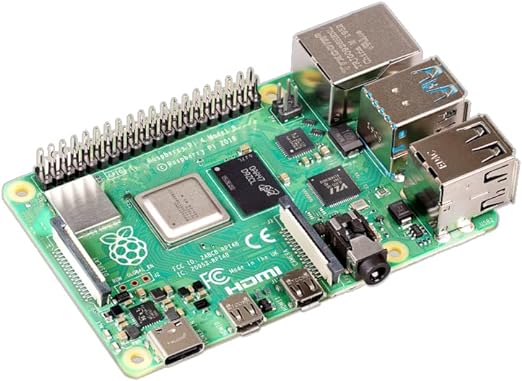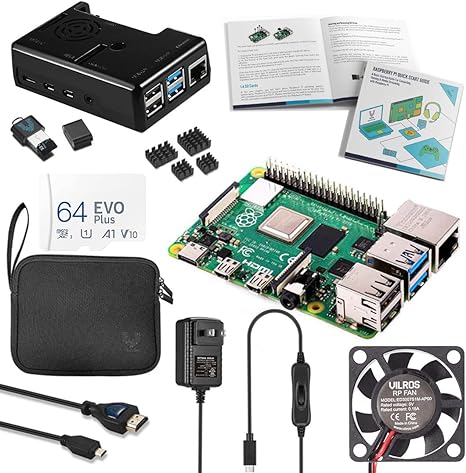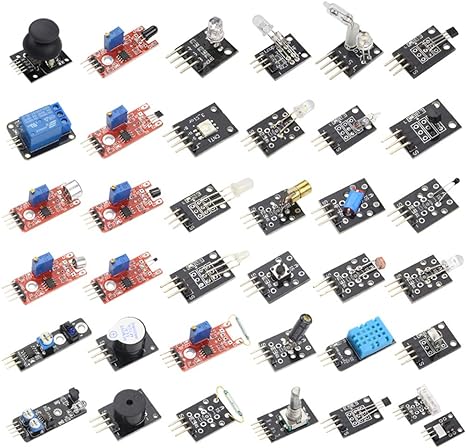
The Internet of Things (IoT) has redefined how we interact with the digital and physical worlds, and the Raspberry Pi sits at the center of this transformation. Let’s explore how combining sensors and actuators with the Raspberry Pi can create innovative and practical IoT solutions.
[wpda_org_chart tree_id=32 theme_id=50]
Sensors and actuators and Internet of Things
IoT (Internet of Things) and sensors/actuators are closely related, but are distinct concepts that are often used together in projects. Sensors play a critical role in IoT, acting as the eyes and ears of devices. Raspberry Pi, with its versatility, can integrate a wide range of sensors such as temperature, humidity, motion and more. These sensors allow devices to sense their surroundings, collecting valuable data for further processing.
Internet of Things (IoT): This term refers to the network of physical devices that are connected to the Internet and to each other, allowing them to collect and exchange data. Raspberry Pi, when used within the IoT, often serves as a central node to manage the collection, processing, and transmission of data between connected devices.
Sensors and Actuators: Sensors are devices that detect various environmental quantities, such as temperature, humidity, movement, or other parameters. Actuators, on the other hand, perform actions in response to received signals. In Raspberry Pi-based IoT projects, sensors are used to collect information about the surrounding environment, while actuators can be used to act based on the collected data.
In summary, sensors and actuators constitute the physical “tools” that allow devices to sense and respond to their surroundings, while IoT represents the broader concept of connecting these devices to a network, allowing them to communicate and cooperate intelligently. Raspberry Pi is often used as a key component in projects that combine both of these aspects to create complete IoT solutions.

Raspberry Pi 4
See the best offer for the following models:
The Heart of the IoT: Raspberry Pi
The Raspberry Pi emerges as the essential hub in the dynamic Internet of Things (IoT) ecosystem, channeling intelligence at the center of interactions between sensors and actuators. Its extraordinary versatility manifests itself in the ability to accommodate a wide range of sensors and actuators, transforming the device into a connection core capable of translating the physical world into digital data. Raspberry Pi’s local processing power proves crucial, enabling rapid, autonomous response to environmental conditions without ongoing dependence on remote servers. The built-in connectivity, which includes options like Wi-Fi and Bluetooth, extends like a bridge to other devices, facilitating seamless communication. High-level security comes first, with Raspberry Pi taking advanced measures to protect data and ensure the integrity of communications. Furthermore, the accessible character of the Raspberry Pi development environment makes IoT more accessible to a wide range of developers, helping to shape a future where intelligent connectivity blends harmoniously with human interaction and the surrounding environment.
Sensors: Observing the Physical World in Detail
Sensors are the eyes and ears in the Raspberry Pi Internet of Things (IoT) ecosystem, providing a detailed window into the physical world. Thanks to the versatility of Raspberry Pi, it is possible to integrate a wide range of sensors, each designed to capture specific environmental quantities. Temperature, humidity, motion, and other sensors allow the Raspberry Pi to sense its surroundings and collect detailed data. This information serves as essential input, powering the Raspberry Pi’s computational brain and enabling informed decisions to be made. In environmental monitoring projects, for example, an air quality sensor could detect the presence of certain pollutants, while motion sensors could be used in home security applications. The combination of Raspberry Pi and sensors in the IoT opens the door to a wide range of applications, enabling the creation of intelligent, responsive solutions that improve our understanding of the world around us.
Actuators: From Detection to Action
Actuators represent the tangible and dynamic response in the Internet of Things (IoT) landscape with Raspberry Pi, transforming the data detected by sensors into concrete actions. These output devices can be varied, from simple relays to electric motors, and play a key role in the IoT ecosystem. Once sensors have captured crucial information about the surrounding environment, actuators come into play to perform specific operations based on this information. For example, an actuator could adjust the temperature of a room in response to data provided by a temperature sensor, or activate an irrigation system based on detected humidity levels in a smart agriculture project. This transformation from sensing to action enables the creation of IoT systems that not only collect data intelligently, but act autonomously and efficiently to improve the physical world in which they are deployed. In this context, Raspberry Pi acts as a central coordinator, orchestrating the harmonious interaction between sensors and actuators, and enabling an intelligent and responsive environment.
Practical IoT Implementations with Raspberry Pi
Practical IoT implementations with Raspberry Pi span a wide range of industries, offering creative and intelligent solutions. Here are some examples of concrete projects that exploit the power of Raspberry Pi in the Internet of Things:
- Smart Home Automation: Transform your home into a smart environment by using Raspberry Pi to integrate motion sensors, temperature sensors and actuators. You can automate presence-based lighting, intelligently adjust room temperature and control appliances remotely.
- Smart Agriculture: Implement an agricultural monitoring system that uses soil moisture sensors, light sensors and Raspberry Pi. This allows you to collect crucial environmental data to optimize irrigation and monitor conditions that affect plant growth.
- Personal Weather Station: Build a personal weather station using temperature, humidity, air pressure and wind sensors connected to the Raspberry Pi. You can view real-time data on a web interface and even set up custom weather alerts.
- Home Security: Use Raspberry Pi together with IP cameras and motion sensors to create a home security system. Receive real-time notifications on your mobile device when motion is detected and access camera images remotely.
- Industrial Automation: Apply Raspberry Pi in industrial automation to monitor and control processes. Connect control sensors such as thermocouples or flow sensors to collect operational data and use Raspberry Pi to manage production in real time.
- Health and Personal Monitoring: Create a health monitoring system using heart rate sensors, body temperature sensors and other biometric sensors with Raspberry Pi. Data can be securely transmitted to cloud services for long-term monitoring.
- Interactive Smart Mirror: Turn a mirror into a Smart Mirror using Raspberry Pi and a display. It integrates motion and temperature sensors to display useful information such as weather forecasts and personalized notifications.
These examples illustrate just some of the countless possibilities offered by Raspberry Pi integration into the Internet of Things. Its flexibility and accessibility continue to inspire developers around the world to create innovative solutions to improve daily lives and solve specific challenges across industries.

Recommended Product:
Conclusion
Raspberry Pi emerges as an excellent platform for implementing advanced IoT projects involving sensors and actuators. Its flexibility, combined with the wide range of sensors and actuators available, paves the way for innovative solutions in areas such as home automation, smart agriculture and much more. Looking to the future, the combination of Raspberry Pi, sensors and actuators promises to shape an increasingly interconnected and dynamic world.
